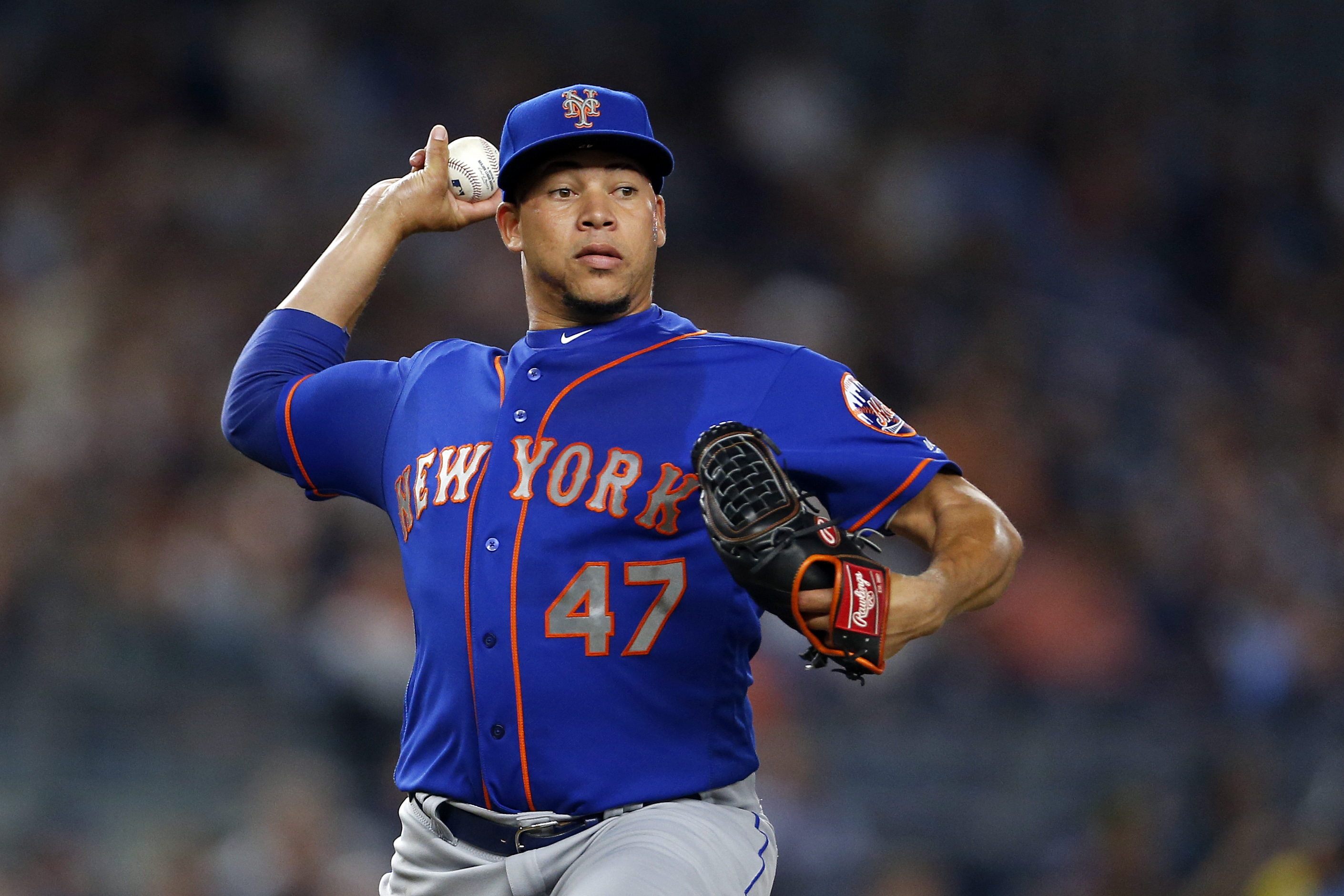With Anthony Swarzak landing on the disabled list from an oblique injury earlier in the week, a spot was opened up in the Mets bullpen, which the Mets chose to fill by recalling everyone’s favorite relief pitcher: Hansel Robles. The Mets could have called on another pitcher on their 40-man roster, but the other options currently on the roster are either likely not ready for the big leagues quite yet (Jamie Callahan, Gerson Bautista, Tyler Bashlor, Marcos Molina) or are starting pitchers who may either be miscast in the bullpen (Chris Flexen, Corey Oswalt) or not totally satisfied in a bullpen role (Zack Wheeler).
So, Robles it was. And Mets fans were, predictably, upset about this. You can get a fairly accurate reading of the fan base’s feelings towards Robles just by looking at the replies to this tweet:
The Mets have placed Anthony Swarzak on the disabled list with a sore left oblique and recalled Hansel Robles from Triple-A Las Vegas, according to MLB’s official transactions page.
— Anthony DiComo (@AnthonyDiComo) April 3, 2018
And in his first appearance yesterday, Robles came on with a two-run lead in the seventh, and naturally… stuck out the side? Yes, Hansel Robles struck out the side, much to the shock of Mets fans across the world streaming the game on Facebook.
And look, I get it. He had an awful season last year, putting up an ugly 4.92 ERA with an even worse 5.13 FIP, and followed that with a brutal spring training this year. He’s prone to the gopher ball and has blown a few games through the years. His control lacks sometimes, and he has a reputation as a bit of a headhunter. He’s famous for pointing upward towards every single ball in the air — usually a celebratory gesture, or simply reserved for high pop-ups — including the no-doubter, 450-foot bombs he gives up.
I get it. He’s annoying. He’s frustrating. Should he have been put in the game yesterday with just a two-run lead? Probably not. Does he deserve to serve as anything more than a mop-up reliever? Absolutely not. Should he ideally be in the minor leagues working on things instead? Of course.
That said, there is a certain level of vitriol that Mets fans direct towards Robles — and have since well before 2017 — which seems totally disproportionate for a pitcher with the major-league success that he’s had, and who still offers the potential he does; the potential that still we saw yesterday.
It was just two seasons ago that Robles was an effective reliever in the major leagues. In 77.2 innings in 2016, the fireballer delivered a solid 3.48 ERA, with a 3.56 FIP and a 4.21 xFIP. He struck out 25.1% of the hitters he faced, and while he had walked a concerning 10.9% of hitters, you can work around that when you strike people out. For example, A.J. Ramos has a career 12.6% walk rate, but a career strikeout rate of 27.7% has allowed him to have a successful career as a late-inning reliever.
That fine 2016 season for Robles was preceded by a similarly-good 2015 season, where he posted a 3.67 ERA and 3.91 FIP and struck out over 28 percent of hitters in 54 innings of work.
Warts were still there in those two years, of course. He still hadn’t developed a true secondary pitch, and that led to below-average chase rates and the aforementioned control issues. That said, Robles appeared to be, at worst, a serviceable middle-reliever who could give you multiple innings, and at best, a potential late-inning reliever with electric stuff, particularly when he had outings like his stellar two-inning performance against the Nationals in September 2015.
Of course, relievers are fickle. And that stuff doesn’t cancel out his 2017 season; that counts, too. And Robles still lacks that secondary pitch and his command hasn’t exactly improved. He gave up 10 dingers last year and allowed a few more in spring (and yes, he pointed up at all of them).
But looking into his terrible 2017 season, you’ll still find positives to take away. Even at his worst last year, Robles still struck out 24.3% of batters, and threw his fastball at an average of 95.1 mph, and it still got whiffs. What’s more, he continued to have success against opposite-handed batters, holding lefties to a .184/.333/.378 batting line.
What I’m trying to say is: there is still usefulness there. And given that he’s been a quality reliever in the recent past, Robles should get a chance in games that count. Now, if there’s a high-leverage situation of any sort, he should still only be a “BREAK GLASS IN CASE OF EMERGENCY” option. And I mean really an emergency situation. Mickey Callaway should still be a long way away from trusting him with the game on the line. But, as we saw, it’s possible that there’s something there; that he continues to show flashes of the stuff that made him a useful reliever for two seasons, builds confidence, and finds the success he was able to have just two years ago. So just give him a chance.
Please?
Photo credit: Adam Hunger – USA Today Sports

1 comment on “Maybe we should give Hansel Robles a chance”
Comments are closed.